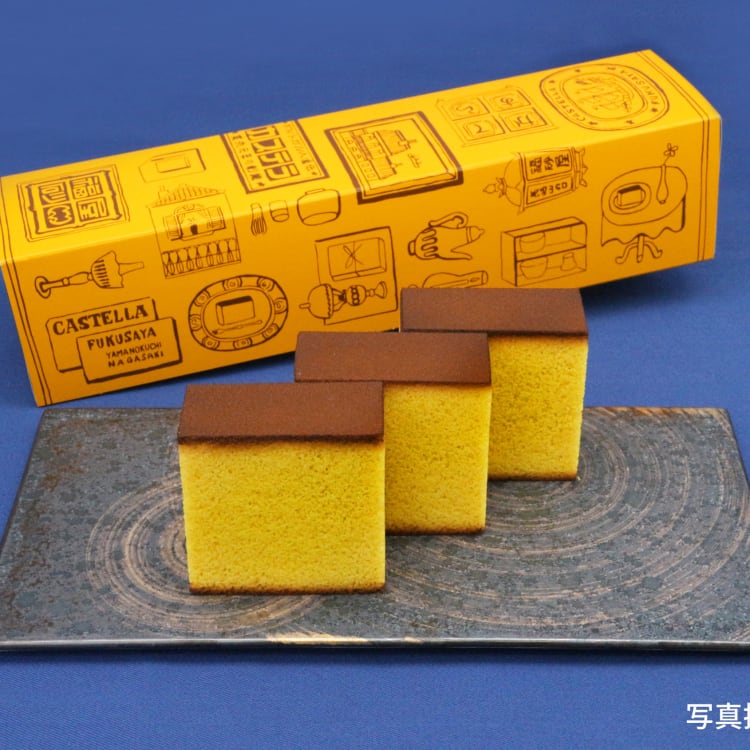
Story Fukusaya’s Famous Castella Cake By JNTO On 16 August 2021
A Piece of Confectionery History
A favourite dessert among the Japanese today is the castella, a sponge cake with a finer, more compact texture than traditional butter pound cakes. It is often served as a snack for afternoon tea because of its moist texture. In Japan, the castella is classified as a wagashi (Japanese confectionery) and while it is a specialty in Nagasaki, this delicacy actually originated from somewhere else: Portugal.
How did a Portuguese cake become one of Japan’s favourite confectioneries?
How the castella came to Japan
The castella was first introduced to Japan by Portuguese missionaries during the 16th century when Nagasaki, which is located on the northwest coast of Kyushu island, was a Portuguese trading outpost. They introduced many then-unusual things to the Japanese, such as guns, tobacco, and pumpkins.

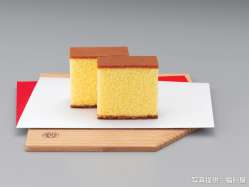
Many Portuguese sailors also brought with them castella cakes – since they were at sea for extended period of time, the cakes were ideal simply because they could be stored for longer durations. It is said that the priests would offer the luxurious sponge cake as gifts to the locals. The cake was known as Pão de Lo in Portugal, but was introduced to the Japanese as “Pão de Castela,'' meaning “bread from Castille” (Castille is a region in Spain). It then became known as “Castela,” or kasutera as pronounced in Japanese.
When the Edo era (1603 to 1867) came around, the ruling Tokugawa shogunate banned foreign trade. However, they constructed a port-island in the city of Nagasaki called Dejima, making it the only port that was open to foreigners during that time. Shaped like a fan, the man-made island – separated by digging a canal through a small peninsula – was set up in 1634 as an enclosed area to contain foreign traders.
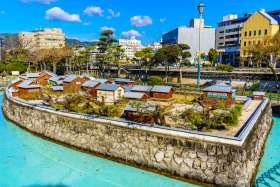

From 1634 to 1854, the Japanese were trading with the Dutch, Chinese, and the Portuguese at Dejima. Even though the Portuguese were banned from Nagasaki by 1639 (only Chinese and Dutch ships were allowed in Dejima), the castella stayed on as a staple in Japan.
The castella became popular among the Tokugawa shogunate, and was also served to Commodore Matthew Perry during the negotiations in Yokohama in 1854. Dejima was abolished soon after, and the island was integrated into Nagasaki city.
While Dejima is no longer an island today, the legacy of the Portuguese pioneers – the castella cake – is still strong in Nagasaki. Dejima was designated a national historic site in 1922 and many historical buildings in Dejima have since been restored, including some of Nagasaki’s oldest bakeries like Bunmeido and Fukusaya (founded in 1624) which are well known among Japanese as the top makers of the confectionary classic.
The Japanese castella
Although the castella has undergone many changes over the years, it is still made with the same basic ingredients – flour, sugar, and eggs. The fluffy, moist cake is traditionally baked in a topless and bottomless wooden frame to give the cake its signature brown and wrinkle-free crust.

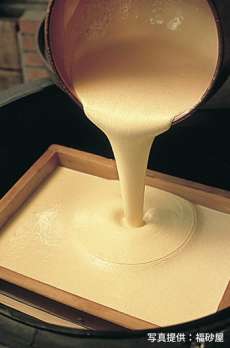
A unique feature of a traditional Nagasaki Castella is the crispy texture of the bottom crust, which comes from the finely-ground brown sugar crystals that sink to the bottom of the batter. The golden brown top consists of a caramelised glaze or honey, and butter or oil is not traditionally used.

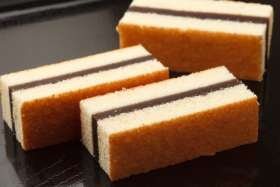
This confectionery has a similar consistency to a dense, pound cake but there are many variations of castella. In Japan, you can find the “Siberia” variation, which is made with a layer of sweet red bean paste wedge between two layers of castella slices. There is also “baby castella”, which is a bite-sized version of the cake, as well as variations that use ingredients like powdered green tea, brown sugar, and honey.
The Japanese also introduced castella to Taiwan, which has its own version of castella that is more chiffon-like and jiggly. The Taiwanese castella is different from the dense, moist, and bouncy Japanese version which uses bread flour and does not contain dairy. The Taiwanese-style ones are best when warm, while the neatly-sliced golden Japanese version is best eaten at least a day later.
Take a box of castella home
Castella is often sold pre-sliced in long boxes (about 30cm), and while a freshly-made cake is tempting, it is suggested to leave the cake wrapped for a few days before eating to make it more flavourful.

You can savour the flavour of Nagasaki Castella when Fukusaya Castella – the legendary castella bakery from Nagasaki – makes its debut in Singapore on 20th August 2021 at Isetan Scotts Supermarket. The Fukusaya Castella Cake will be available at SGD$25.90 a box.
To commemorate the launch, there will be a live webinar broadcast from Fukusaya, which includes an introduction about Nagasaki and Fukuoka, and will conclude with a cooking demo by Masayo Satoh-sensei of Spoonful!
Tune into our Facebook Live event to learn more about Castella
Tune in online to JCC Facebook and discover more about Kyushu (Fukuoka, Nagasaki) and the signature Castella. There will also be a special giveaway of Fukusaya Castella cakes, tote bags, and mobile chargers from JNTO to lucky viewers.
Date: 20 August 2021
Time: 12pm-1pm
Venue: Online (Premiere on JCC Facebook Live)
Fukusaya Castella Cake at Isetan Scotts Supermarket
Price: SGD$25.90 a box
Fukusaya website: Welcome to Fukusaya!|福砂屋オフィシャルサイト

























































